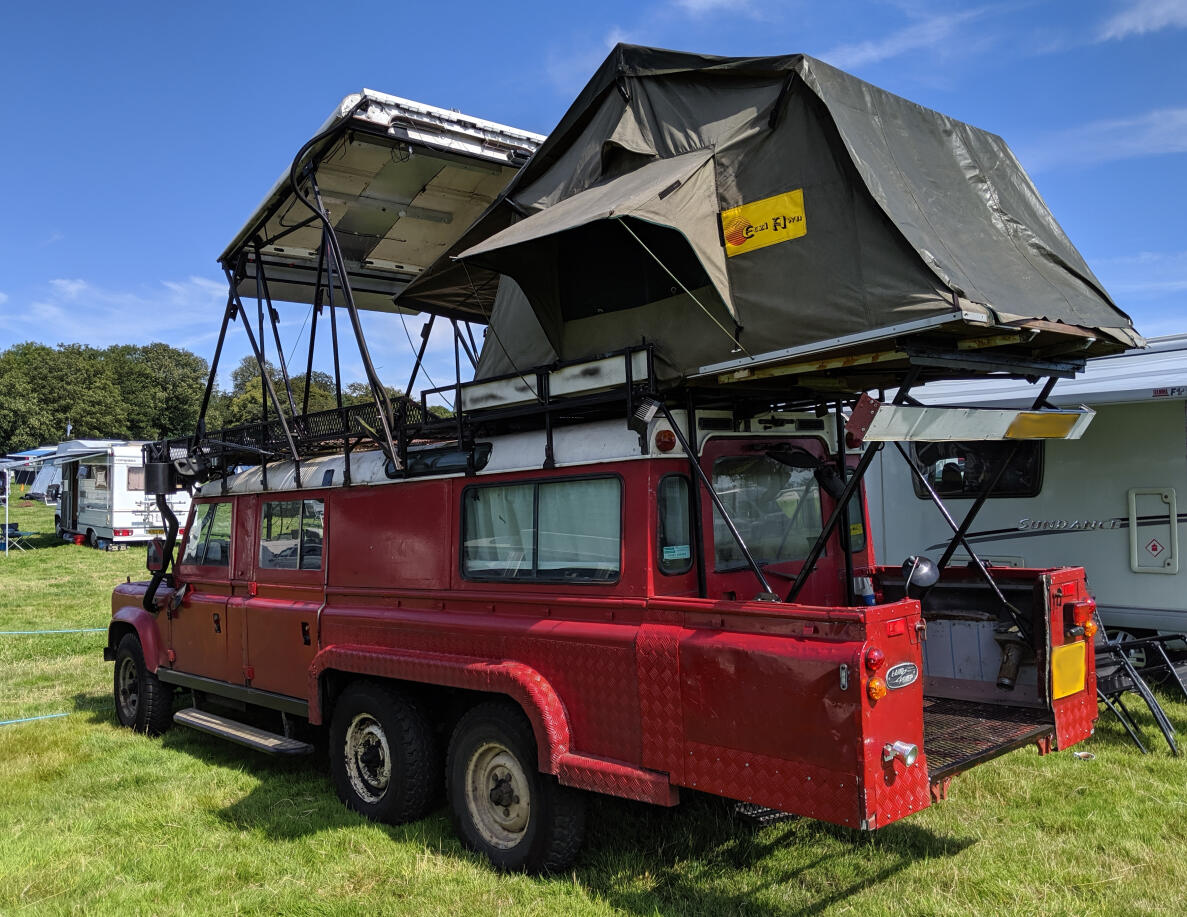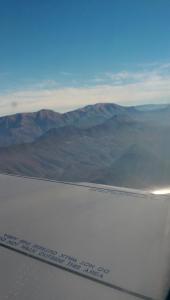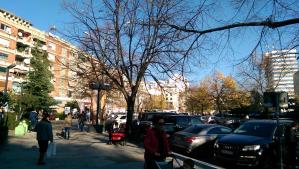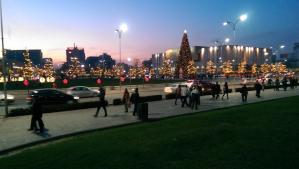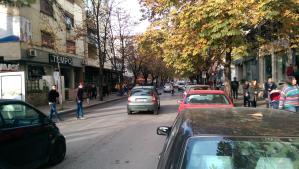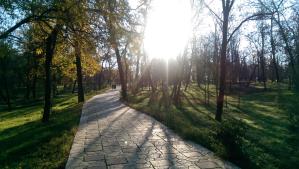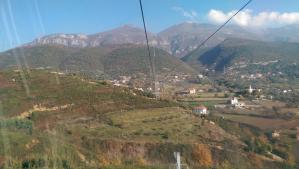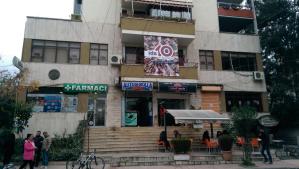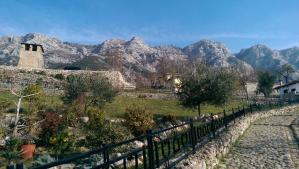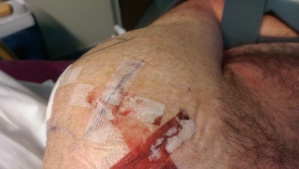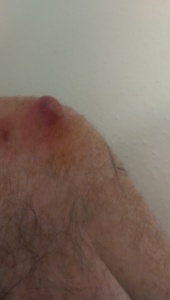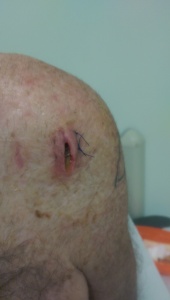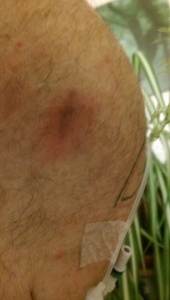I took a liking to Albania on my first visit, and met up with the local hackerspace, Open Labs, who invited me to come to their annual conference, OSCAL (Open Source Conference Albania). I happily booked transport and hotel for this, including a few days either side of the conference for general holiday and OpenStreetMap mapping.

One of the newer parts of Bari
This time, I decided to take the “scenic route”, and rather than flying directly to Tirana, I booked a flight to Bari (in south-east Italy) and a ferry from Bari to Durrës (the port for Tirana). This turned out not to be a good idea, as there wasn’t enough time for the connection from the flight to the ferry, and I had to find a hotel for the night in Bari and get the next ferry, 24 hours after the one I had planned to get. I posted my progress on Facebook, and it turned out a friend of mine is from Bari, and had local contacts, so he put me in touch with another Emacs user at the Polytechnic, who gave me access to a room with wifi, which was convenient for writing my presentation for the conference.
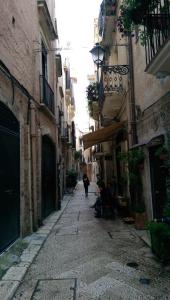
In the old part of Bari
Having finished that, I walked to the old area of Bari, near the old harbour, and wandered around looking at the buildings and walls, and generally taking my leisure, before walking on to find the ferry terminal. Having got there with about the right amount of time left, I found that it wasn’t where I should be; I had to go somewhere else first, to check in, then come back. Fortunately, there was some informal transport around (an Albanian furgon) and I made it in time. The ship then spent a couple more hours in port for the lorries to finish embarking, which made the previous evening even more annoying retrospectively: in the real physical world, outside the world of bureaucratic ferry officials, there would have been plenty of time to get there from the airport.
Arrival in Albania

Arrival at Durrës
I had let my Albanian friends know about the situation, and when the ferry docked, there was a taxi waiting for me to take me straight to the conference, which made somewhat alarming progress, and I got there in time for the start of it after all.
The conference
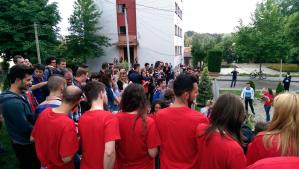
OSCAL group photo in progress
Compared with FOSDEM, OSCAL is tiny, but it’s making a good start, and had an interesting line-up of talks and seminars. It’s not as heavily technical as FOSDEM, with more focus on the user side of software, and on Open Data. I met some interesting people there, and was introduced to some of the local Smart City people, who admitted there was a lot of groundwork to be done in terms of the more basic city facilities.

An open manhole, rendered safe
(Actually, Tirana seems to work pretty well, but it’s not as fussy as some places about things like coning off open manhole covers, so you have to take a little more responsibility for yourself than in England, for example. I don’t have a problem with that myself.) I gave a workshop on editing
OpenStreetMap.

The afterparty
After the conference itself, there was of course a dinner and then an afterparty, held in an underground brewpub in Blokku.
Exploring and mapping
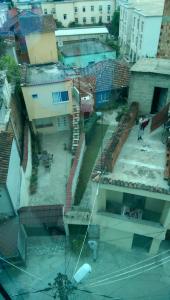
Buildings near the conference
After the conference itself, I helped people at OpenLabs learn some more about mapping tools, and we mapped some more of the local area. As well as the main streets, Tirana has a warren of tiny back ways, and an eclectic mixture of modern and traditional buildings.
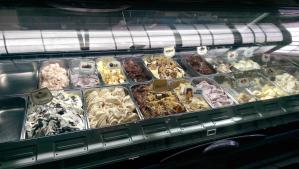
Akullore

The Alma snack bar
I had a few days in Tirana after the conference, and explored it some more, and did some more mapping, and ate more ice cream (“akullore” is the first Albanian word that really stuck in my memory). The “brown” flavours (chocolate, caramel, etc) taste good; the fruity-coloured ones taste rather artificial. The Alma was my favourite snack shop, with a range of foods that I wasn’t familiar with but was happy to try.
Bunkart

The approach to Bunkart
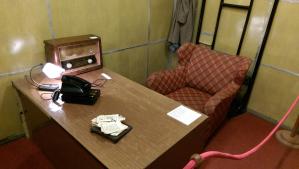
In an office in Bunkart
One day I went to see Bunkart (an Cold War government bunker converted into a museum and an art exhibition). That was quite hard to find, as the entrance has moved but I don’t think all the signs have. I asked a couple of passing locals, who helped me find it in what seems to be a common Albanian way: they walked there with me.
Dajti Expres

The Dajti Expres teleferik
As on my previous visit, I went for a ride on the Teleferik again.
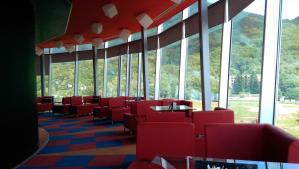
The rotating restaurant at the top of the hotel tower
This time, I also went to the rotating restaurant at the top.

About to descend
More exploration
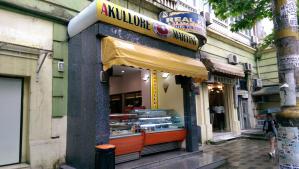
Akullore Martini

Cakes at Akullore Martini
I also went back to my favourite pasticeri, “Akullore Martini”, and ate amazingly sticky cakes in the rain by the river Lanë.
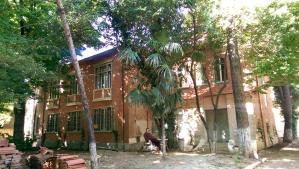
The House of Leaves
There are plans to open `Shtëpia e Gjetheve’ (`House of Leaves’), the old surveillance and interrogation centre) as a museum, but progress seems to be slow.

Inside a large Mulliri Vjeter
And, of course, I went a few times to the big Mulliri Vjeter café near the hotel. I’m pleased to say that Albania’s own coffee house chains seem to be holding off the big internationals; and deservedly so: they are excellent, with much more character (and better coffee and food).

Tirana skyline with mountains
Like any big city, Tirana has a wide variety of scenes; on my first trip, I was entirely in the centre (apart from a taxi trip out to the cable car) but this time I also went on buses and saw some more of the city.

A fountain catching the morning sun
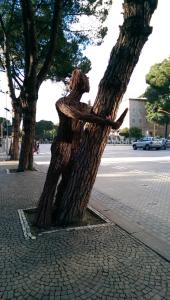
Artwork and a tree
The central area is grand, but not overawing.

Taivani Centre (just across the way from the former Communist party area)

Skanderbeg
The restaurant and entertainment complex `Taivani’ is said to be called that because of a fanciful resemblance, although I heard an alternative theory that it’s because it’s next door to the (former) communist party Block.
The national hero Skanderbeg dominates Skanderbeg Square. Some say he should be more than a national hero, but a pan-European one, for holding the Ottomans back for so long.

The ever unfinished `Green Tower’
The uncompleted skyscraper known as the `Green Tower’ looked to be in just the same state as I saw it in last year; I heard the developer ran out of money. That’s not the first time that’s happened here.
The Grand Park
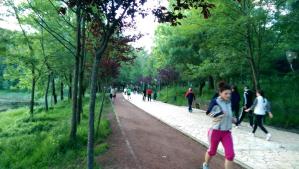
The running track in the Grand Park

The lake by the park
As before, I went for some runs in the Grand Park; this time, I could run much further than before (although I’m still doing a mixture of running and walking). If you start from the entrance, and take the right fork, and go all the way to the end and back, you’ll get about 5km in total. There’s no Parkrun here, but it would be an excellent place for one.

The church of St Procopius

The gym in the park
This time, I found there was a church in the park (dedicated to St Procopius). The park also has a free, public, outdoor gym, which is popular. So it’s getting on for catering for body, mind and spirit, all in one park.
More cafés

A terrace café near the park
There are, of course, plenty of cafés near the park. (There are plenty of cafés throughout Tirana, as far as I can tell.)

Café Sophie
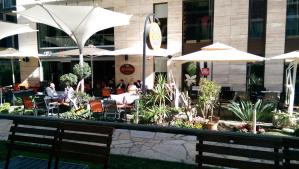
Café Kristin
These two cafés are opposite each other, quite near the park.

Smoothie menu
As well as the cafés, I found a smoothie bar on the way back from the park, with some distinctive flavours available.

The basement of the book café

Books in the café
I also found an excellent book café, Friends’ Book House, with a basement reading room that is popular for studying and writing.
The return journey
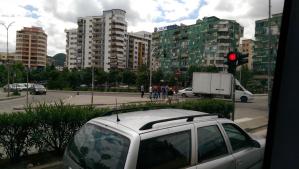
Go this way (from the bus to Kashar)
My return journey had complications of its own. I decided that I’d try Albania’s railway system. The railway station in Tirana was demolished some years ago, with a view to building a replacement sometime; they still haven’t got round to that second stage. So I took a bus to the nearest railway station, at Kashar.
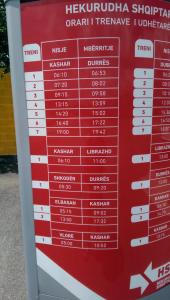
Many trains
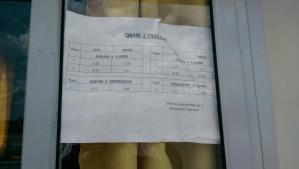
No, actually, there are only a few trains
The official-looking sign was promising a train in less than an hour, but the piece of paper stuck to the window indicated that the only trains were very early in the morning. Eventually a passer-by explained that the big notice referred only to the high summer season, when many people would go to the beach.
Back to Durrës

Wonderful moist baklava
So I walked back to the main road, and waved down a furgon and was soon in Durrës, where I had by far the best baklava I’ve ever had (it made the baklava we get in England look like digestive biscuits in comparison) and walked along part of the ancient Via Egnatia. I had to wait around quite a bit at the ferry terminal; I think it was worse than going by air, and the ship for this journey was grottier than the one for the outward journey. It was an overnight sailing, but I didn’t get much sleep.
Returning via Bari

Back to Bari
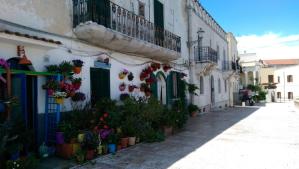
Houses in Bari
I had a rainy day in Bari (but found some pleasant places for coffee and lunch), flew back to Stansted, got the last bus to the hotel (I was too late for the trains), and returned to Cambridge the following morning. A tiring trip, but an interesting one.









